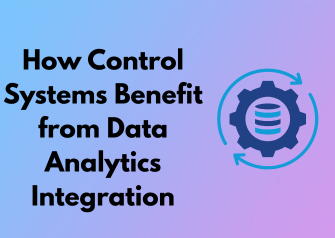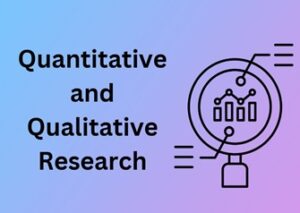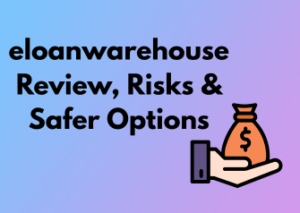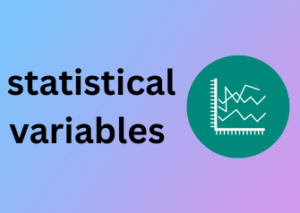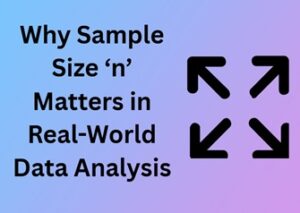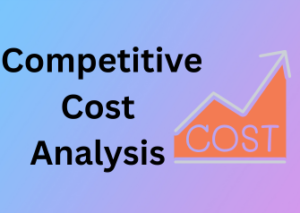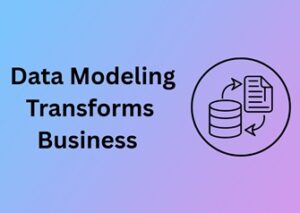Let’s face it: data is everywhere! From the GPS that navigates us to work to the smart thermostats that keep our homes cozy, data is the silent superhero shaping how systems function. When it comes to control systems—which help regulate processes in industries as diverse as manufacturing, energy, and transportation—data is truly the heartbeat driving innovation. But why is data so critical, and what makes it a game-changer for modern control systems?
Data as the Foundation of Efficiency
At its core, a control system is all about maintaining stability, ensuring efficiency, and driving better outcomes. The catch? None of that can happen effectively without reliable, high-quality data. Data feeds the control systems with vital information on variables like temperature, speed, pressure, and more. Think of it this way: a control system without data is like trying to cook a recipe without knowing the ingredients—you’re blindly guessing!
By integrating consistent and accurate data streams, these systems continuously adjust operations to meet target performance levels. Machines run smoother, systems work faster, and we get the right results with minimal waste. Exciting, right?
Unlocking Precision and Speed with Data
Today’s technology is fast-paced, and control systems need to keep up. Data allows these systems to make precise and timely adjustments, adapting in real-time to changes in the environment or parameters. For instance, in a power grid, data enables control systems to respond instantly to load fluctuations, ensuring lights stay on and energy is used efficiently—it’s like instant problem-solving magic!
The Role of Automation: Less Guesswork, More Accuracy
Another major benefit of data in control systems is how much guesswork it removes from the equation. Gone are the days when operators had to base decisions solely on experience or intuition. With robust datasets and analytics, control systems can automatically adjust processes based on exact, real-time measurements. Here’s a fun example: imagine an irrigation system that knows the soil is already damp from last night’s rain and skips watering that morning. Smart and sustainable, thanks to well-integrated data!
The Secrets of Scalability: Why Data is Future-Proof
Control systems that rely on good data aren’t just effective today; they’re ready to grow into tomorrow’s challenges. As new technologies emerge and demands evolve, systems powered by strong data foundations can scale up without a hitch. This is especially important in industries like renewable energy, where grid demands change rapidly, or in manufacturing, which needs adaptable solutions to meet shifting production goals. In short, data positions modern control systems to evolve gracefully.
Bridging Gaps: How Analytics Change Real-Time Decision-Making
Let’s be honest—if control systems were a band, data analytics would be the rock star. Imagine decision-making as the heartbeat of any control process. Now add in a powerful tool like data analytics, and suddenly that heartbeat is stronger, faster, and way more precise. But how exactly does this magical synergy work? Allow me to guide you through it in an engaging and straightforward way!
The Struggle Before Analytics
Historically, control systems relied on a steady stream of input data and calculations. While these systems were functional, they weren’t necessarily the most proactive or capable of adapting to new situations on the fly. For example, think of a manufacturing plant identifying faults in machinery. Pre-analytics, such systems required fixed logic. They reacted to problems rather than anticipating them. It was the standard “if X happens, do Y” approach—a bit rigid and not exactly the dynamic problem-solver you’d want in a fast-paced world.
Real-Time Decision-Making Gets an Upgrade
Enter data analytics. Thanks to advancements in computation and machine learning, analytics has transformed static, rule-based control systems into more fluid, predictive powerhouses capable of remarkable feats. Using live data streams, analytics enables control systems to recognize patterns, deviations, and emerging risks—all in real time. How cool is that?
Take supply chain logistics, for instance. By integrating analytics, these systems now crunch vast amounts of information—supplier performance, weather forecasts, or even traffic updates—to automate decisions more intelligently. The result? Managers no longer have to sort through mountains of data themselves, and supply delays are mitigated in the blink of an eye.

The Beauty of Predictive Analytics
Switching gears a bit, let’s talk about prediction. One of the standout benefits of adding analytics into control systems is their ability to reduce uncertainty. Predictive analytics processes current and historical data to forecast trends or risks, empowering the system to act preemptively. It’s like having a GPS tell you not only your route but also alerting you to potential potholes up ahead.
“Preventing an issue is always cheaper and less stressful than solving it once it’s happened.”
Improved Efficiency and Precision
Consider the energy sector. Power grids are a perfect example of how analytics refine real-time decision-making. Smart grids incorporate analytics to optimize energy usage based on real-time demand. They can identify peak usage times, predict future spikes, and allocate resources efficiently, even adjusting output in milliseconds to avoid disruptions.
- Resource Allocation: Analytics ensures that critical resources are deployed exactly when and where they’re needed.
- Error Reduction: With predictive insights, errors are flagged before they even occur, significantly minimizing disruptions.
- Faster Response: The system reacts and adapts to changes automatically, often faster than a human operator could.
Turning Data into Action: Predictive Insights for Control Efficiencies
Have you ever wondered how businesses and industries are consistently getting smarter, faster, and more efficient? A lot of it has to do with something fascinating: the ability to turn raw data into actionable insights. When it comes to control systems, predictive analytics is the secret sauce behind enhanced performance and reliability. Let’s dive into how this works and why it’s such a game-changer.
From Data Overload to Decision Power
Picture this: Every modern control system—whether it’s an HVAC system in a skyscraper or a manufacturing robot on a factory floor—is constantly generating massive amounts of data. Temperatures, pressures, rotational speeds, operational timings… it’s a flood of information. But here’s the tricky part: without proper tools, this data is just noise. Enter predictive analytics.
Predictive analytics uses advanced algorithms, machine learning, and statistical models to identify trends buried in these noisy datasets. By crunching historical and real-time data, it’s able to forecast what’s likely to happen next. This ability to predict and anticipate is pure gold for control systems because it allows them to shift from being reactive to proactive.
Minimizing Downtime, Maximizing Performance
One of the biggest benefits of predictive insights is how they improve operational continuity. In industries where downtime can cost thousands—or even millions—of dollars per minute, predictive analytics is a lifesaver.
- Detecting anomalies: Predictive systems can catch subtle patterns that indicate something’s off before a failure occurs, giving teams time to step in.
- Preventative maintenance: By analyzing the performance of individual components, systems can predict when maintenance is needed instead of relying on fixed schedules, reducing time and money spent on unnecessary servicing.
- Optimization: Predictive tools help achieve peak performance across all machines by continuously tweaking operations for maximum efficiency.
For example, in power grids, predictive models analyze energy consumption trends to prevent overloading or outages. In production lines, they ensure equipment runs smoothly while reducing wear and tear. The result? Fewer interruptions and a massive boost in overall system reliability.
Empowering Operators with Better Decisions
A well-designed predictive system doesn’t just keep the machinery humming—it empowers the people managing those systems. Operators no longer have to rely solely on intuition or past experiences to make decisions. Instead, they have clear, data-backed insights at their fingertips.
For instance, a factory operator can receive early warnings about a conveyor belt motor showing wear. A dashboard might display detailed metrics, projected failure timelines, and suggested actions—turning what could have been a crisis into a future-proofed solution. Clearer insights mean fewer errors, quicker decisions, and more confident teams.
What About Scalability and Flexibility?
A common concern about advanced systems like predictive analytics is the fear of getting locked into rigid frameworks. Luckily, modern predictive tools are extremely adaptable. They can “learn” and adjust over time as they process more data, making them sustainable even as businesses grow or processes evolve.
Imagine a renewable energy plant that starts with wind turbines but adds solar panels to the mix. A flexible predictive system can incorporate data from new equipment while still forecasting overall performance as accurately as ever. This ensures long-term efficiency without the need for expensive overhauls.
Adaptive Responses: Learning Systems and Their Impact on Processes
Imagine a control system that not only follows predefined rules but also learns and adapts over time. Sounds futuristic, right? Well, with the integration of adaptive learning systems powered by data analytics, this is no longer just a concept — it’s becoming a practical reality. Let’s explore how these systems are reshaping traditional processes and unlocking incredible potential for smarter operations.
What Are Adaptive Learning Systems?
Adaptive responses in control systems rely heavily on the concept of Machine Learning (ML) and Artificial Intelligence (AI). These systems use historical data, real-time inputs, and algorithms to make adjustments in processes without requiring manual intervention at every step. Think of it as a system that evolves as it processes more data, achieving greater accuracy, efficiency, and reliability over time.
How Do Learning Systems Integrate Into Processes?
One of the key ways learning systems enhance processes is by continuously analyzing data streams. When an anomaly or inefficiency is detected, these systems respond dynamically and adjust operations accordingly. Let me give you an example:
- Energy Management: A smart HVAC system might recognize fluctuating energy demands throughout the day. It can “learn” to predict peak hours and then optimize energy use, saving resources without sacrificing performance.
- Industrial Automation: Manufacturing machinery equipped with learning capabilities could identify wear and tear in components before they fail, scheduling maintenance automatically to avoid downtime.
- Transportation Systems: Adaptive traffic control systems monitor congestion and adjust traffic lights to minimize delays, improving the flow of vehicles and reducing fuel consumption.
Why Adaptive Responses Are a Game-Changer
What sets adaptive learning systems apart from traditional control mechanisms is their ability to identify patterns and adapt to changing conditions. In industries where even minor disruptions can cause significant losses, this kind of intelligence is invaluable. It provides:
- More Accurate Decision-Making: By learning from past events, adaptive systems forecast what’s likely to happen and make smarter adjustments.
- Faster Adjustments: With real-time monitoring and instant analytics, these systems deliver quicker reactions than any human could achieve.
- Resiliency: Adaptation helps processes recover from unexpected disruptions or variations without significant manual oversight.
Practical Scenarios You’ll Appreciate
Let’s bring this down to real-life examples:
- Smart Grids: As renewable energy sources fluctuate due to weather, adaptive systems balance the grid to ensure stable electrical supply.
- Retail: Inventory systems equipped with learning algorithms adapt pricing strategies or stock levels based on seasonal demand forecasts.
How Can Businesses Get Started?
If you’re wondering how your organization can tap into the power of adaptive responses, start with these steps:
- Harness the Data: Ensure you’re collecting accurate and extensive data — this is the foundation for learning systems.
- Start Small: Test adaptive systems on a pilot project before scaling across the enterprise.
- Collaborate: Work with data scientists or technology partners who specialize in AI and ML for control systems.
Streamlining Resource Usage with Data Trends and Patterns
When it comes to control systems, efficiency is the name of the game. But have you ever wondered how these systems can get smarter at managing resources? The answer lies in harnessing data trends and patterns. By integrating data analytics, control systems can evolve from being merely functional to being highly optimized, saving energy, time, and resources. Let’s dive into how this works—and why it’s something everyone should care about!
The Power of Patterns
Every control system generates an enormous amount of data over time. Embedded within this data are rich patterns and trends that reveal how resources like energy, materials, or labor are being consumed. Whether it’s a HVAC system fine-tuning indoor temperatures or a manufacturing plant optimizing assembly lines, these systems are full of hidden insights. Analytics tools help uncover these patterns, pinpoint inefficiencies, and suggest routes for improvement.
Predicting Peaks and Dips
One of the coolest aspects of data analytics is its ability to forecast. Using historical data and modern algorithms, control systems can predict when resource demand will spike or taper off. For example:
- A power grid might predict higher electricity usage during summer afternoons and prepare accordingly.
- In a factory, analytics might highlight when machinery downtime is most likely, allowing teams to carry out maintenance proactively.
- Smart irrigation systems may analyze weather data to determine the optimal amount of water needed for crops.
By anticipating these fluctuations, systems can operate far more smoothly, avoiding waste and preventing bottlenecks that might otherwise occur due to poor resource management.
Data-Driven Resource Optimization
Real efficiency isn’t just about saving money or resources in the short term—it’s about creating sustainable systems. Data analytics enables resource optimization by identifying specific, actionable fixes. This can include:
- Reducing unnecessary processes that consume energy without adding value.
- Fine-tuning scheduling to ensure no resource is overused or underutilized.
- Balancing workloads to ensure consistent output without surges that strain systems.
And the best part? These seemingly small optimizations often lead to considerable savings, contributing directly to leaner, greener operations.
Success Through Better Decisions
Think of data analytics as your system’s decision-making coach. By analyzing trends, patterns, and anomalies, your systems gain the ability to “adapt” and “think,” leading to smarter and faster decisions. Instead of running on outdated assumptions, control systems can adjust on-the-fly with real data, ensuring that every resource is utilized to its fullest potential.
Practical Challenges and Scalable Solutions in Analytics Adoption
Data analytics has transformed the way control systems operate, from improving efficiency to enabling smarter decision-making. But let’s face it, implementing analytics into control systems isn’t always a walk in the park. There are hurdles that businesses must overcome to fully integrate them—and success lies in how we address these challenges with scalable solutions. Let’s dive into the realities of analytics adoption and how to navigate them with confidence.
Challenges Standing in the Way
While data analytics holds immense potential, rolling it out into control systems often comes with its fair share of roadblocks. Here are a few challenges that consistently show up:
- Data Overload: One of the most common issues is navigating the sheer volume of data generated by modern control systems. Figuring out which data points are useful versus irrelevant can feel like looking for a needle in a haystack.
- Integration Issues: Many systems were built long before data analytics was a consideration. This means retrofitting analytics tools to older systems can be technically complex and costly.
- Skill Gaps: Implementing advanced analytics requires skilled professionals, and businesses often struggle to find talent proficient in both data science and control systems management.
- Cost Constraints: Analytics technology and the infrastructure on which it runs can be expensive. For small to medium-sized businesses, this may be a significant hurdle.
- Data Quality Problems: Analytics tools are only as effective as the data provided to them. Inconsistent, incomplete, or outdated data can render these systems less effective or even cause unreliable results.
Scalable Solutions to Drive Success
The good news is that these challenges are not insurmountable! With careful planning and strategic execution, businesses can overcome these hurdles and successfully integrate analytics into their control systems. Here’s how to make it happen:
- Start Small and Scale: Begin with a pilot project. Test analytics on a smaller control system or process before committing to a large-scale rollout. This way, teams can identify and solve potential roadblocks on a smaller scale, learning valuable lessons along the way.
- Leverage Automation Tools: Automated tools can take the grunt work out of processing data, allowing systems to filter through large datasets and identify actionable insights with minimal input.
- Invest in Training: Bridge the talent gap by offering training programs to current staff or hiring personnel with a dual background in analytics and systems management.
- Partner with Experts: Collaborate with companies or consultants specializing in analytics integration for control systems. Their expertise can make implementation smoother and faster.
- Focus on Data Hygiene: Develop clear protocols to ensure the data fed into analytics platforms is clean, consistent, and reliable. A strong foundation of high-quality data is critical for success.
- Modular Technologies: Opt for modular and flexible analytics solutions that can be upgraded or scaled as your control systems grow. This future-proofs your investment and reduces costs over time.
Future Potential: Integration Strategies for Continued Growth
When it comes to control systems, the journey into the future is paved with exciting opportunities powered by the integration of data analytics. The steps we take today will shape a landscape where efficiency, precision, and innovation flourish. Let’s dive into how businesses and industries can lay the groundwork for continued growth, harnessing the full potential of data analytics to evolve their control systems.
Building a Vision for Tomorrow
First off, integrating data analytics into control systems is not a one-and-done deal. It’s a journey. Future success depends on having a strategic vision that balances short-term wins with long-term adaptability. This means fostering a mindset that sees control systems as not just tools for the present but platforms that evolve alongside organizational goals and technological advancements.
Setting clear benchmarks and continuously revisiting them is key. Ask yourself: how do your control systems perform now, and what role should data play in making them smarter? Creating a roadmap with achievable milestones ensures steady progress while staying flexible for emerging data technologies.
Leveraging Scalable Technologies
The future of analytics-driven control systems lies in their scalability. Businesses need to invest in platforms and tools that grow with their needs. Whether you’re a small operation looking to optimize a single process or a large-scale company aiming for enterprise-wide integration, start with solutions that allow gradual expansion. Scalable technologies, such as cloud-based systems, modular software, and IoT devices, enable organizations to adjust as workloads and data volumes increase.
- Cloud computing: Provides cost-effective storage and real-time access to analytics insights, perfect for managing growing datasets.
- Open-source analytics tools: These allow businesses to tailor solutions to their own specific requirements without breaking the bank.
- IoT integration: Connect more systems and sensors over time, creating a more holistic, data-rich environment.
Staying Ahead with Emerging Trends
The next wave of innovation in control systems expects to capitalize on breakthroughs in artificial intelligence, machine learning, and real-time analytics. By keeping an eye on trends, businesses can remain at the forefront of technological evolution. Machine learning, for instance, will allow control systems to make better predictions, improve accuracy, and adapt autonomously to unexpected changes.
Additionally, advancements in data visualization ensure that analytics insights remain accessible, even as datasets grow in complexity. Simplified dashboards and intuitive reporting tools empower operators and decision-makers to act faster and with greater confidence.
Collaborative Integration Across Teams
Let’s not forget one critical piece of the puzzle: the human element. Future-forward control systems thrive when teams across departments—engineers, IT staff, analysts, and operators—collaborate. A collective approach ensures that analytics integration aligns with everyone’s needs while improving buy-in at all levels of the organization.
Encouraging cross-departmental communication can help identify bottlenecks, refine workflows, and unlock the full potential of your analytics-integrated control system.

